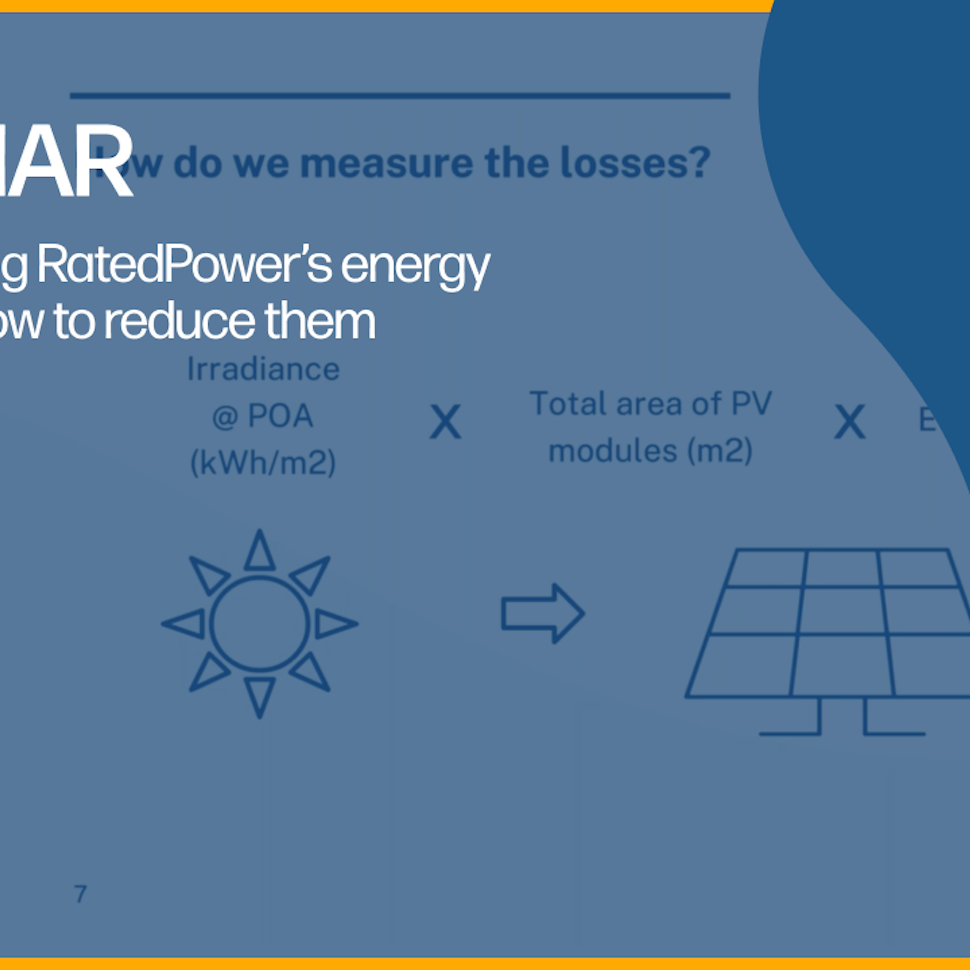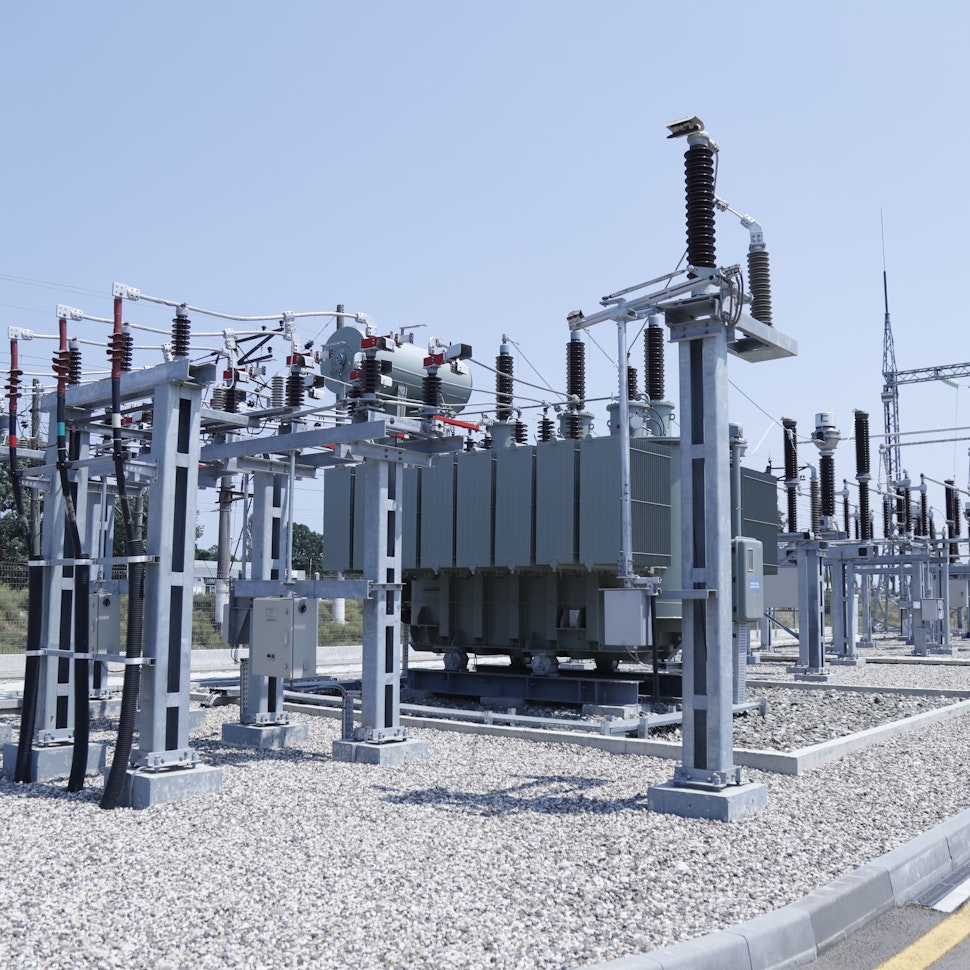What is the difference between a megawatt and a megawatt hour?


Jeremy Vickerman
Senior Content Manager
Senior Content Marketing Manager at RatedPower with extensive experience in content strategy, production, and communications. Over a decade of expertise spanning marketing, recruitment consulting, and public relations across the UK and Spain, with a strong track record in driving brand visibility and audience engagement.


Hassan Farhat
Lead Technical Advisor
Hassan Farhat has a background in Energy Engineering and excelled in his Master of Science in Renewable Energy in Electrical Systems. More than three years ago, he joined the RatedPower technical team, where he works as a Solar Photovoltaic Engineer and Customer Success Manager at RatedPower.
Hassan has a thorough understanding of the industry and of RatedPower’s pvDesign, the digital solution to reduce LCOE and maximize productivity of utility-scale PV plants. He's passionate for renewable energies and their role within the global environmental transition.

Read to discover what a megawatt is and what the difference is between a megawatt and a megawatt hour?
Content
What is a megawatt?
Definition of a megawatt - A megawatt (MW) is a unit of power that equates to one million watts. When a power source is rated as one megawatt, it means it has the capacity to deliver energy at a rate of one million joules per second.
Regardless of whether they are coal-fired or hydroelectric dams producing electricity, a power plant typically uses MW as their primary measurement of output capacity.
What is the difference between a megawatt and a megawatt hour?
A megawatt measures the power capacity of an electrical system, providing an indication of how much electricity can be produced at any given moment. On the other hand, a megawatt hour represents how much electricity that system delivers over a period of one hour. For example, if a 1 MW solar array runs continuously at capacity for one full hour, it theoretically produces 1 MWh of electricity.
To help visualize this concept further, imagine your solar energy system as a water pipe. The megawatts would represent the size or diameter of that pipe, and this would indicate its capability to deliver water. In contrast, the MWh would be equivalent to the actual volume of water flowing through that pipe over an hour.
How many solar panels do you need to reach 1 MW capacity?
The number of solar panels needed to reach one megawatt of installed capacity depends on their wattage, efficiency, and the amount of sunlight available in their location.
An average solar panel has a capacity of around 440 watts, and one megawatt is equivalent to one million watts. This means that approximately 2,200 solar panels would be needed for the capacity of one full megawatt.
The type of panel matters as well. Monocrystalline panels are often more efficient than others at converting sunlight into electricity. This means that if you were using solar panels that were not very efficient, you might require more than 2,200 of them to have the capacity of one megawatt, even if they all had 440-watt capacity or more.
Having said this, if all the panels had a 440-watt capacity, they wouldn’t get close to generating one megawatt hour consistently as panels rarely operate to their full capacity.
What can one megawatt-hour power?
A single megawatt-hour is a substantial amount of energy. To give you an idea of exactly how much, it is enough to keep two refrigerators or two 60-watt light bulbs running for an entire year.
One megawatt-hour is enough to drive an electric vehicle 3,600 miles. To put that into perspective, that is the equivalent of driving from New York City to Los Angeles and still having plenty of battery power left over.
To further illustrate, one megawatt of power is enough to power the average household in America home for 1.2 months, run a swimming pool pump for five continuous months, or even toast almost 90,000 slices of bread.
How many homes can 1 megawatt-hour power?
If we consider the average UK home with its typical electrical energy consumption rates, approximately 2,000 individual houses could be powered by just one megawatt for a one-hour period.
Increase installed solar capacity and maximize megawatts in your solar farm
There are a number of factors that can make a big difference when looking to increase the number of megawatts a solar farm is able to produce. As a rough estimate, you’ll need about one hundred thousand square feet or just over 2.2 acres of land to install solar panels with the capacity of a single megawatt.
Once you have maxed out the space you have at your disposal, the next step is to ensure that it’s all being used as effectively as possible. Solar farms thrive on flat lands or south-facing slopes, as these conditions maximize exposure to sunlight.
Beyond sunlight exposure, factors such as flood risks, grid access, and zoning laws are other key considerations when choosing the best location.
Technology choices can also influence the performance of a solar farm. Choosing suitable modules, structures, and inverters to maximize efficiency is essential, as is selecting battery systems that adequately store solar power.
Solar trackers are another option, as they follow the sun’s path across the sky and can increase the overall energy captured by as much as 25%, but they are more expensive. This cost must be weighed against the output over the tracker’s lifetime to ensure it’s the best choice for a plant.
Equally important as your setup is keeping your solar farm well maintained. Bird droppings, dirt, dust, and other debris can rapidly accumulate on the surface of solar panels if they’re not regularly maintained, decreasing their efficiency. Even a small amount of dust can have a negative impact.

Design utility-scale solar at lightning speed
RatedPower's energy losses and how to reduce them
Join our Product Owner, Gorka Arrieta and explore the key aspects of front-face losses, back-face losses and electrical system losses and gain tips on maximizing energy efficiency in your PV projects

Latest stories
Related glossary posts
Technology and engineering
How solar zenith and azimuth impact panel efficiency
Updated 8 SEP, 25

Technology and engineering
Albedo and Solar Power: What You Should Know
Updated 8 SEP, 25

Technology and engineering
What is a solar substation and how to customize yours with RatedPower software
Updated 5 MAY, 25

Related posts
Technology and engineering
Outsmarting congestion: How efficient solar design helps navigate Nordic grid limits
Learn how Nordic operators and solar developers are adjusting to tighter grid conditions and how policy and design decisions are keeping projects on track.
Updated 16 DEC, 25

Technology and engineering
The rise of ultra-thin perovskite solar cells
Learn about Japan’s $1.5B initiative to commercialize ultra-thin, flexible perovskite solar cells and how it could transform the solar landscape globally.
Updated 30 SEP, 25

Technology and engineering
The green hydrogen boom in LatAm
Latin America is emerging as a green hydrogen leader. Learn how LatAm countries are leveraging solar and wind power to drive green hydrogen production.
Updated 22 JUL, 25

- RatedPower
- Glossary
- M
- Megawatt
 Watch a demo
Watch a demo Ask our AI Product Expert
Ask our AI Product Expert


